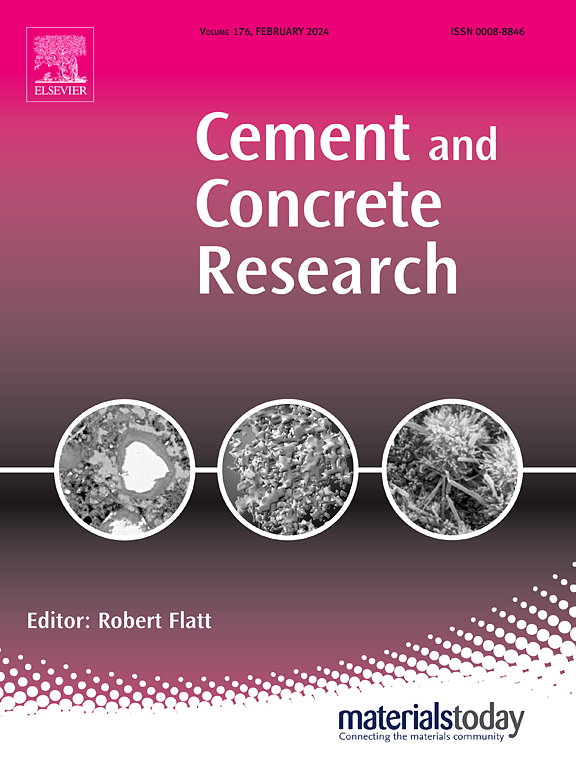碳化托贝莫里石中碳酸钙熟料矿物的形成和热分解:低温范围内CO2释放的机理
IF 13.1
1区 工程技术
Q1 CONSTRUCTION & BUILDING TECHNOLOGY
引用次数: 0
摘要
热重分析(TGA)已广泛应用于胶凝材料中固定CO2的定量分析。众所周知,胶凝材料中的碳酸钙不仅在700-800°C左右分解,而且在较低的温度范围内(300-600°C左右)也会分解。然而,在低温范围内CO2释放的机制尚不清楚。本文研究了在不同相对湿度和1.0% CO2浓度下合成的托伯莫里石的半干碳酸化过程,以揭示低温条件下CO2释放的机理。热重分析表明,碳酸钙的分解发生在三个不同的温度范围内。700 ~ 800℃左右的峰值是由水晶石和文石转化而来的方解石分解所致。400-600°C左右的峰值是由于水晶石和文石与硅胶的固相反应,导致CO2释放。300-400°C左右的峰值是由于无定形碳酸盐矿物的分解。本文章由计算机程序翻译,如有差异,请以英文原文为准。
Clinker mineral formation and thermal decomposition of calcium carbonates in carbonated tobermorites: Mechanism of CO2 release in low-temperature ranges
Thermalgravimetric analysis (TGA) has been widely used to quantify the amount of fixed CO2 in cementitious materials. It was well-known that calcium carbonates in cementitious materials decomposed not only around 700–800 °C but also in lower-temperature ranges (around 300–600 °C). However, the mechanism of CO2 release in low-temperature ranges was not clarified. This study investigated the semi-dry carbonation of synthesized tobermorite under different relative humidities and a 1.0 % CO2 concentration to reveal the mechanism of CO2 release in low-temperature ranges. TGA revealed that the decomposition of calcium carbonates occurred at three different temperature ranges. The peak around 700–800 °C was attributed to the decomposition of calcite transformed from vaterite and aragonite. The peak around 400–600 °C was attributed to the solid-state reaction of vaterite and aragonite with silica gel, resulting in CO2 release. The peak around 300–400 °C was attributed to the decomposition of amorphous carbonate minerals.
求助全文
通过发布文献求助,成功后即可免费获取论文全文。
去求助
来源期刊

Cement and Concrete Research
工程技术-材料科学:综合
CiteScore
20.90
自引率
12.30%
发文量
318
审稿时长
53 days
期刊介绍:
Cement and Concrete Research is dedicated to publishing top-notch research on the materials science and engineering of cement, cement composites, mortars, concrete, and related materials incorporating cement or other mineral binders. The journal prioritizes reporting significant findings in research on the properties and performance of cementitious materials. It also covers novel experimental techniques, the latest analytical and modeling methods, examination and diagnosis of actual cement and concrete structures, and the exploration of potential improvements in materials.
 求助内容:
求助内容: 应助结果提醒方式:
应助结果提醒方式:


